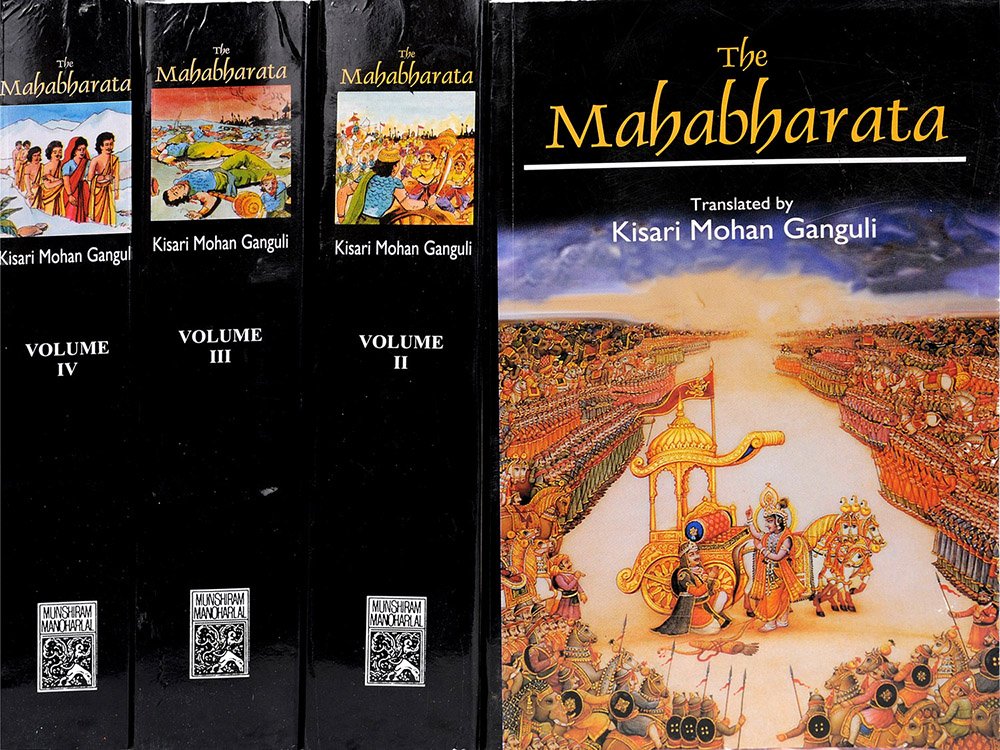Mahabharata (English)
by Kisari Mohan Ganguli | 2,566,952 words | ISBN-10: 8121505933
The English translation of the Mahabharata is a large text describing ancient India. It is authored by Krishna-Dwaipayana Vyasa and contains the records of ancient humans. Also, it documents the fate of the Kauravas and the Pandavas family. Another part of the large contents, deal with many philosophical dialogues such as the goals of life. Book...
Section X
"Vaisampayana said, 'Then clad in a cowherd’s dress, and speaking the dialect of cowherds, Sahadeva came to the cowpen of Virata’s city. And beholding that bull among men, who was shining in splendour, the king was struck with amazement.
And he directed his men to summon Sahadeva. And when the latter came, the king addressed him, saying,
'To whom dost you belong? And whence dost you come? And what work dost you seek? I have never seen you before. O bull among men, tell me truly about you.'
'Having come before the king that afflicter of foes, Sahadeva answered in accents deep as the roar of the cloud,
'I am a Vaisya, Arishtanemi by name. I was employed as a cowherd in the service of those bulls of the Kuru race, the sons of Pandu. O foremost of men, I intend now to live beside you, for I do not know where those lions among kings, the sons of Pritha, are. I cannot live without service, and, O king, I do not like to enter into the service of anyone else save you.'
"Hearing these words, Virata said,
'You must either be a Brahmana or a Kshatriya. You lookest as if you were the lord of the entire earth surrounded by the sea. Tell me truly, O you that mowest down your foes. The office of a Vaisya is not fit for you. Tell me from the dominions of what king you comest, and what you knowest, and in what capacity you wouldst remain with us, and also what pay you wouldst accept.'
"Sahadeva answered,
'Yudhishthira, the eldest of the five sons of Pandu, had one division of kine numbering eight hundred and ten thousand, and another, ten thousand, and another, again, twenty thousand, and so on. I was employed in keeping those cattle. People used to call me Tantripala. I know the present, the past, and the future of all kine living within ten Yojanas, and whose tale has been taken. My merits were known to that illustrious one, and the Kuru king Yudhishthira was well-pleased with me. I am also acquainted with the means which aid kine in multiplying within a short time, and by which they may enjoy immunity from disease. Also these arts are known to me. I can also single out bulls having auspicious marks for which they are worshipped by men, and by smelling whose urine, the barren may conceive.'
"Virata said,
'I have a hundred thousand kine divided into distinct herds. All those together with their keepers, I place in your charge. Henceforth my beasts will be in your keep.'
"Vaisampayana continued, 'Then, O king, undiscovered by that monarch, that lord of men, Sahadeva, maintained by Virata, began to live happily. Nor did anyone else (besides his brothers) recognise him.'"
Conclusion:
This concludes Section X of Book 4 (Virata Parva) of the Mahabharata, of which an English translation is presented on this page. This book is famous as one of the Itihasa, similair in content to the eighteen Puranas. Book 4 is one of the eighteen books comprising roughly 100,000 Sanskrit metrical verses.
FAQ (frequently asked questions):
Which keywords occur in Section X of Book 4 of the Mahabharata?
The most relevant definitions are: Sahadeva, Virata, Vaisampayana, Vaisya, Kuru, Pandu; since these occur the most in Book 4, Section X. There are a total of 13 unique keywords found in this section mentioned 25 times.
What is the name of the Parva containing Section X of Book 4?
Section X is part of the Pandava-Pravesa Parva which itself is a sub-section of Book 4 (Virata Parva). The Pandava-Pravesa Parva contains a total of 12 sections while Book 4 contains a total of 4 such Parvas.
Can I buy a print edition of Section X as contained in Book 4?
Yes! The print edition of the Mahabharata contains the English translation of Section X of Book 4 and can be bought on the main page. The author is Kisari Mohan Ganguli and the latest edition (including Section X) is from 2012.
